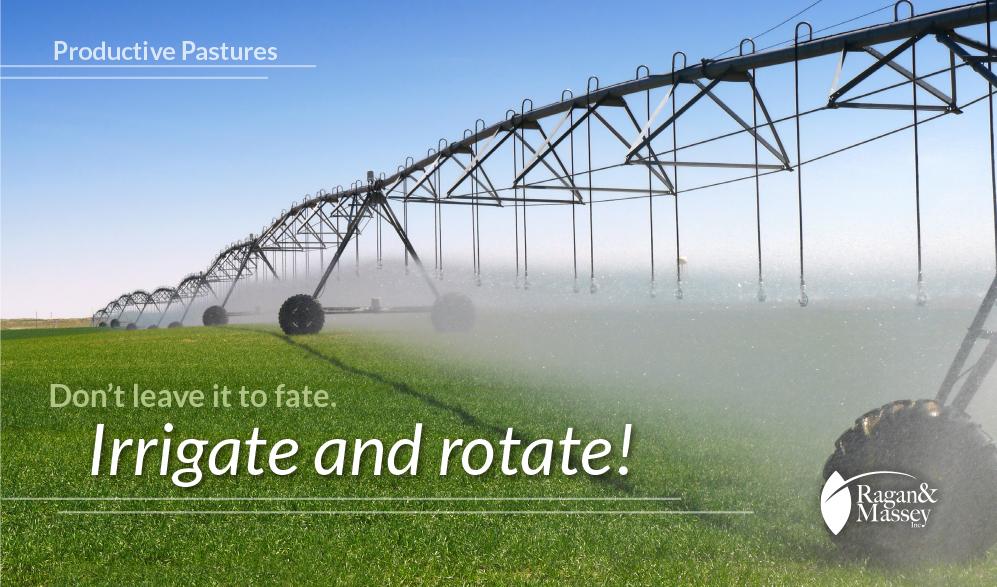
A healthy, vigorous pasture can improve livestock gains and reduce feed costs. But growing pasture in the South and Southeast brings special challenges because growers must consider forage grass varieties, soil type, soil pH, fertility, weed and pest control, and water availability.
Today, we’ll discuss the importance and specifics of irrigation and rotation.
Should I consider irrigation?
Adequate water extends the grazing season. During hot weather, forage plants can require 0.25 to 0.30 inches of water per day. Without water, plants go dormant and grazing must be replaced by feeding stored or purchased hay. Rainfall is so unpredictable; you might be able to justify an irrigation system on at least part of the operation.
Making pasture irrigation a viable option requires an adequate water source. To cover one acre with one inch of water takes 27,158 gallons. You’ll have to determine water source availability and pumping costs to determine if irrigation is the right solution for you. Irrigation can help extend your grazing season through the hotter, dryer months.
You’ll need to determine if there is a nearby affordable source of water, the cost of a system to move that water, and if you need a permit from your state and the U.S. Army Corps of Engineers to pump. Permits can take up to 12 months to be approved, so plan ahead. Irrigation systems are a long-term investment that pay for themselves in increased forage production, but a competitive return on investment may take hundreds of hours of pumping over a period of years. System efficiency is a factor. Newer pivot irrigation systems may be 85 percent efficient, but older systems might be less than 60 percent efficient, requiring more energy and labor to bring sufficient water to the pasture. Irrigation will increase forage production, which usually brings a need for additional fertility. Soil salination and hoof compaction of wet soils can also be a concern.

Paddock rotation is a must
A typical grazing paddock rotation is one to four days of grazing followed by a recovery period of 20 to 35 days. Stock density is also a factor. If you do intensive grazing, you’ll typically want to rotate paddocks after one day. A yearling will typically eat 3 percent of its bodyweight per day, so 83 animals can take 1,900 pounds of forage per acre in 24 hours. If they eat all the forage, they’ll be hungry and start looking to escape to greener pastures.
For further reading on pasture irrigation and grazing rotations, the Grazing Lands Conservation Initiative publication “Extending Your Grazing Season and Reducing Stored Feed Needs” by Dr. Don Ball, professor emeritus at Auburn University, is an excellent resource.

Read previous installments of Productive Pastures
https://raganandmassey.com/2016/07/08/choices-make-healthy-vigorous-forage/
https://raganandmassey.com/2016/06/09/know-obstacles-establishing-pasture/
https://raganandmassey.com/2016/05/10/determining-soil-fertility-first-step-productive-pasture/
Follow Ragan & Massey!
Be sure to follow Ragan & Massey on Facebook and Twitter for daily updates, and check back here every week for more in-depth expertise, advice and product updates.
